A Comprehensive Reference for OPUS

CORS and OPUS for Engineers
Edited by Tomás Soler
PUBLISHED BY THE AMERICAN SOCIETY OF CIVIL ENGINEERS

CORS and OPUS for Engineers
Edited by Tomás Soler
PUBLISHED BY THE AMERICAN SOCIETY OF CIVIL ENGINEERS
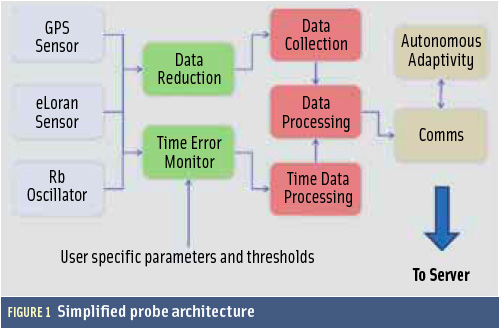 FIGURE 1: Simplified probe architecture
FIGURE 1: Simplified probe architectureGNSS vulnerability is rightly one of the most talked about topics of 2011.
By Inside GNSS FIGURE 1: GPS III On Orbit
FIGURE 1: GPS III On OrbitIn May 2008, Lockheed Martin Space Systems Company received a contract from the U.S. Air Force to develop a new, third generation of GPS satellites. The GPS III space vehicle (SV) has been designed (Figure 1, see inset photo, above right) and is now being built to bring new future capabilities to both military and civil positioning, navigation, and timing (PNT) users throughout the globe.
By Inside GNSS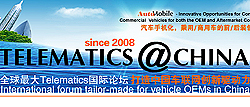
The 2011 Telematics@China conference and exhibition will be held at the Shanghai Marriott Hotel City Centre in Shanghai, China from Wednesday through Friday, December 7-9.
The annual event, which began in 2008, is sponsored by the Automotive Engineers of China (SAE-China) and supported by a number of government departments. The conference will feature 90 speakers from all sectors of the telematics industry. Organizers expect 1,000 attendees from China and the rest of the world.
By Inside GNSS[Updated September 2, 2011] Amid White House efforts to keep a lid on the process and congressional hearings on the subject, the controversy surrounding LightSquared’s interference to GPS could compel the Federal Communications Commission (FCC) to require another round of testing — this time of the wireless broadband company’s lower L-band frequencies.
By Inside GNSS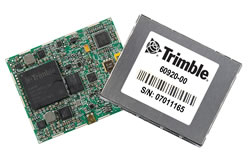 Trimble BD920
Trimble BD920Trimble has introduced two new GNSS OEM modules, the BD910 and BD920, featuring centimeter-level, real-time kinematic (RTK) positioning capabilities optimized for high-precision and control applications.
The BD910 and BD920 modules are designed to allow OEMs and system integrators to easily add centimeter-level positioning to specialized or custom hardware solutions.
By Inside GNSS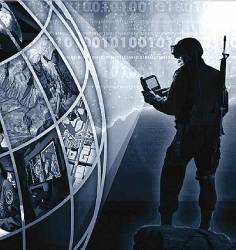 Raytheon Corporation illustration
Raytheon Corporation illustrationMembers of the Advanced Control Segment (OCX) team led by Raytheon Corporation are working through a series of issues that has delayed approval of a recent preliminary design review (PDR) on the key GPS modernization program.
By Inside GNSS
Do you use Topcon products in your daily life and work? If so, Topcon invites you to pick up your cell, your video camera or any other video recording device and show them what you do and how you do it.
Send in your two minute clip by October 1 – just point and shoot and upload, the company says.
By Inside GNSS One of 12 magnetograms recorded at Greenwich Observatory during the Great Geomagnetic Storm of 1859
One of 12 magnetograms recorded at Greenwich Observatory during the Great Geomagnetic Storm of 1859 1996 soccer game in the Midwest, (Rick Dikeman image)
1996 soccer game in the Midwest, (Rick Dikeman image)
 Nouméa ground station after the flood
Nouméa ground station after the flood A pencil and a coffee cup show the size of NASA’s teeny tiny PhoneSat
A pencil and a coffee cup show the size of NASA’s teeny tiny PhoneSat Bonus Hotspot: Naro Tartaruga AUV
Bonus Hotspot: Naro Tartaruga AUV
 Pacific lamprey spawning (photo by Jeremy Monroe, Fresh Waters Illustrated)
Pacific lamprey spawning (photo by Jeremy Monroe, Fresh Waters Illustrated) “Return of the Bucentaurn to the Molo on Ascension Day”, by (Giovanni Antonio Canal) Canaletto
“Return of the Bucentaurn to the Molo on Ascension Day”, by (Giovanni Antonio Canal) Canaletto The U.S. Naval Observatory Alternate Master Clock at 2nd Space Operations Squadron, Schriever AFB in Colorado. This photo was taken in January, 2006 during the addition of a leap second. The USNO master clocks control GPS timing. They are accurate to within one second every 20 million years (Satellites are so picky! Humans, on the other hand, just want to know if we’re too late for lunch) USAF photo by A1C Jason Ridder.
The U.S. Naval Observatory Alternate Master Clock at 2nd Space Operations Squadron, Schriever AFB in Colorado. This photo was taken in January, 2006 during the addition of a leap second. The USNO master clocks control GPS timing. They are accurate to within one second every 20 million years (Satellites are so picky! Humans, on the other hand, just want to know if we’re too late for lunch) USAF photo by A1C Jason Ridder.  Detail of Compass/ BeiDou2 system diagram
Detail of Compass/ BeiDou2 system diagram Hotspot 6: Beluga A300 600ST
Hotspot 6: Beluga A300 600ST

1. AQUARIUS
Buenos Aires, Argentina and Vandenberg AFB, California, USA
What have we learned from the LightSquared fiasco?
Aside from the fact that someone gambling with other people’s money, with friends in high places benefiting from his largesse, can make the law stand on its head and our hair stand on end.
But then, we already knew that.
Just because the forces behind the broadband cellular company, Philip Falcone and Harbinger Investments, made their money by betting against the housing bubble doesn’t take away from the fact that they represent the same crew who helped take down the world economy in 2007.
By Inside GNSS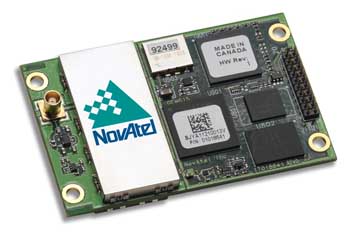 NovAtel OEM615 receiver
NovAtel OEM615 receiverNovAtel, Inc. has introduced the newest member of its OEM6 receiver family: the OEM615. Measuring only 46x71x11 millimeters (1.81×2.79×0.43 inches) and weighing 24 grams (0.84 ounces), the diminutive OEM615 provides precise positioning in a familiar, compact form factor.
By Inside GNSS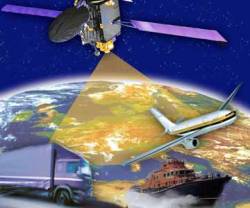 European Geostationary Navigation Overlay Service (EGNOS). ESA illustration
European Geostationary Navigation Overlay Service (EGNOS). ESA illustrationCiting European Space Agency (ESA) studies that showed “harmful interference” to Galileo receivers operating up to 1,000 kilometers from LightSquared base stations, a European Commission (EC) official has told the Federal Communications Commission (FCC) about his “deep concerns” about the wireless broadband company’s terrestrial transmissions in the 1525–1559 MHz band next to L1 GNSS frequencies.
By Inside GNSS